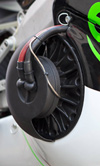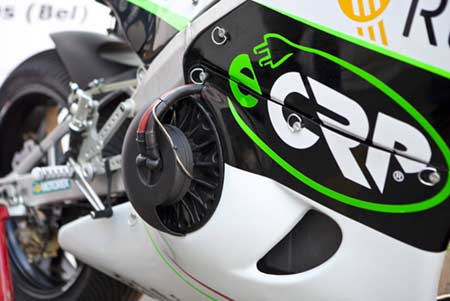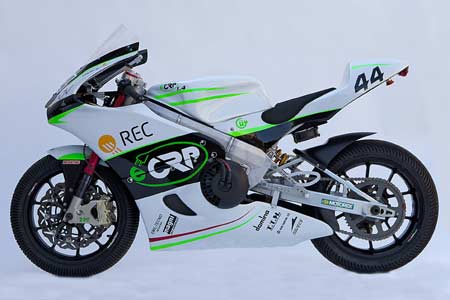Electric motors
 As we move ever further along the road of increasing the efficiency of race engines and drivetrains, we will see energy recovery play a more important part. Turbo-compounding, where energy is recovered from the exhaust flow, remains strictly for commercial vehicles for the time being. However, regenerative braking is very much a current technology, both for roadcars and in racing. With Williams, Flybrid and Zytek active in sportscar racing, and the Formula One engine manufacturers running KERS this season, energy recovery is very much in the limelight.
As we move ever further along the road of increasing the efficiency of race engines and drivetrains, we will see energy recovery play a more important part. Turbo-compounding, where energy is recovered from the exhaust flow, remains strictly for commercial vehicles for the time being. However, regenerative braking is very much a current technology, both for roadcars and in racing. With Williams, Flybrid and Zytek active in sportscar racing, and the Formula One engine manufacturers running KERS this season, energy recovery is very much in the limelight.
Nowhere is the efficiency of energy recovery and the function of the electric motor more important though than in pure-electric racing. There are a few race series that involve only electric vehicles, and electric motorcycle racing is probably the most successful of these. This class of racing is still in its infancy, and with an all-electric race now forming part of the Isle of Man TT race programme, and TTX-GP championships running on both sides of the Atlantic, there are many variations of powertrain in use. I spoke recently to Italian TTX-GP entrant CRP about the electric motors used in its e-CRP machine.

The machine uses two 26 kW brushed direct-current (DC) motors. Brushes are the components that carry current between the stationary parts of the motor and the rotating shaft; there are brushless DC motors that have the advantage of being more efficient but require complex motor control. The speed control of a brushed DC motor can be achieved with a simple rheostat or potentiometer. Previous winners of the electric Isle of Man TT have used brushed DC motors. This, along with the good balance of cost and performance of a brushed DC motor, were stated as the main reasons for using this type of motor.
CRP uses a standard (although unspecified) DC motor. In using two motors, CRP says it is important to select pairs of motors with equal performance, so that both are working equally hard for a given controller setting. A special air-cooling system has been developed by the team in order to control the motor temperature. Francesca Cuoghi of CRP said, "Keeping low temperature of the motor means having a better output." The motors are very rugged and, as such, require no anti-vibration measures; they are mounted solidly in the motorcycle.

However, the motors are stated to be the limiting factor in the performance of this motorcycle, with the batteries able to supply more power than the motors can convert. It is true for any electric race machine, but particularly with an electric race motorcycle, that it is important not to have a large mismatch between the performance of the energy storage (battery) and the energy conversion (motor). The mass of both these components depends to some extent on performance, and any unused performance means a mass penalty for the motorcycle. A battery with more energy capacity will be larger and heavier, while a motor with greater torque will also be heavier. Any weight penalty on a race machine as small and light as this motorcycle needs to be kept to a minimum.
Fig. 1 - Detail view of the brushless DC motor used on the e-CRP 1.4 electric race motorcycle (Courtesy of CRP)
Fig. 2 - A view of the complete race machine. The electric motor in this view is installed as a mirror image of that in Fig. 1 (Courtesy of CRP)
Written by Wayne Ward